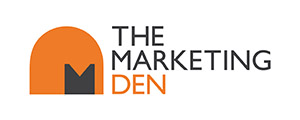Your basket is currently empty!

How to be ‘Discoverable’ wherever people are searching
Discoverability
“Discoverability” is a hot topic at the moment. Because for the first time in decades, the search landscape is changing.
“Google it” How many times have you said that over the past 20 years? Quite a lot I’d imagine. But should we still say “Google it”? Suddenly it feels outdated. Because we all know that not everyone, Googles everything anymore. They Tik Tok it. Is that a phrase? Or Chat GPT it. Admittedly it doesn’t have quite the same ring to it.
So how do we stay current / remain discoverable if the search market is becoming fragmented? Should we even care about Google updates anymore?
Arguably yes. Despite the hype, enough people do still “Google it”, to make optimising for Google worthwhile. In fact, according to SEM Rush, Google still handles 5 trillion searches per year globally. And Google still holds just under 90% of the Global Search Engine market share.
So for now, if we want our brands to be discovered, Google still matters.
But zoom out, and the story is bigger: whilst there’s still a lot of people using Google, there’s also a growing number of people finding information via other search engines, AI tools and even social platforms.
So where should you focus your efforts? If you’re a charity or visitor attraction that relies on being found online, here’s what you need to know.
Google’s Spam Update: What’s Changed?
Google’s latest spam update (August 2025) has put fresh pressure on websites to raise their content game. So what’s changed? The August 2025 spam update targeted “scaled content abuse.” That means Google wants to reduce the visibility of low value content. That might be thin content, repetitive content or over optimised content. Content that’s not original (i.e. written by AI with no edits) has also taken a bit of a nose-dive.
Through this update, Google has made it clear that it doesn’t care who or what writes your content. But is does care if it’s useful, original, and trustworthy.
For charities and attractions, this has a few implications:
Quality beats quantity. A detailed “Plan Your Visit” page that answers practical FAQs is more valuable than 10 generic blogs about “things to do this summer.”
Originality counts. Press release copy-and-paste jobs won’t cut it. Add your own photos, context, and stories to stand out.
AI is fine if you edit it. If you’re using tools like ChatGPT to draft blogs or social posts, great. But layer in your unique perspective, local details, and examples. Make it original.
Search Isn’t Just Google Anymore
Whilst Google still has a high market share, there’s no denying that the way people search online is changing. Discovery now happens across three main spaces:
Traditional search (Google, Bing, etc.) Still the go-to for directions, opening times, event info, and comparisons. Important for “high intent” searches, like “family attractions near me” or “donate to animal charities UK.”
Example: Wildwood Trust in Kent has a detailed “Plan Your Visit” section, with clear info on tickets, directions, accessibility, and facilities. This type of practical content consistently outperforms generic review sites in Google results.
Social search (TikTok, Instagram, even LinkedIn) Social platforms are acting like mini search engines. For example, someone might type in “day out in Devon” on TikTok. TikTok recently capped hashtags to five per post, meaning focus matters more than volume.
Example: Severn Valley Railway has been posting short TikToks of their steam trains in action, using just two hashtags – #DayOutWithKids and #HeritageRailway. Those videos now appear in TikTok search results for local family activities, driving a noticeable bump in footfall.
AI search (ChatGPT, Perplexity, Gemini, Copilot) Growing fast for quick recommendations: “What are the best days out for kids in London?” These tools often pull from high-authority sites, FAQs, and well-structured web copy.
Example: Dogs Trust updated its FAQ page with clear, structured answers about adopting pets. When someone asks ChatGPT “How do I adopt a dog in the UK?”, the charity’s guidance is often summarised, giving them visibility with zero ad spend.
What charities or attractions should do now
So, how do you stay visible across all these discovery channels? You won’t go far wrong if you do the following:
Create content with a clear purpose. Every page should answer a real question or need. Think: “How donations help” stories, “When’s the best time to visit” guides, or “FAQs about volunteering.”
Keep your content fresh. Update older blogs with new stats, quotes, or images.
Example: In the summer, Chester Zoo published content on how animals stay cool in hot weather. Timely updates like this keep pages relevant and seasonal.
Optimise visuals. Add alt-text, descriptive file names, and captions. Images aren’t just pretty – they’re searchable.
Example: Tintagel Castle (run by English Heritage) uses strong, well-captioned photography to illustrate both the visitor experience and the site’s dramatic history. Good labelling and metadata help these images appear in Google Images.
Caption social content for discoverability. Write captions that include keywords your audience might search for (“dog-friendly days out,” “family attractions Cornwall”). Use hashtags wisely.
Experiment with AI discoverability. Structure content clearly with headings, FAQs, and schema markup so AI tools can easily lift your answers.
Stay human. Whether your content is read in a Google snippet, a TikTok caption, or an AI summary, it should feel authentic and trustworthy. That’s how you build lasting engagement.
Why this matters more than ever
For charities, search discoverability isn’t just about clicks, it’s about support and impact. If potential donors can’t find you, that’s funding lost. If potential visitors can’t discover your attraction, that’s ticket sales gone.
The August spam update was a bit of a wake-up call for many. But ultimately, it’s not about chasing algorithms. It’s about serving your audience better. If you focus on quality, originality, and clarity, you’ll naturally keep your content in good shape for Google, social, and AI alike.
Final thoughts
To stay visible, you need to spread your efforts across search engines, social platforms and AI. The best way to do this is to focus on creating useful content for your audiences, rather than getting too caught up on how best to please the various algorithms.
The good news? Charities and visitor attractions already have what works best – real stories, passionate communities, and experiences worth sharing. Package those well, and you’ll be discoverable wherever people are searching.
Need help nailing discoverability for your organisation? Get in touch or find out more about our SEO consultancy services.






Leave a comment: